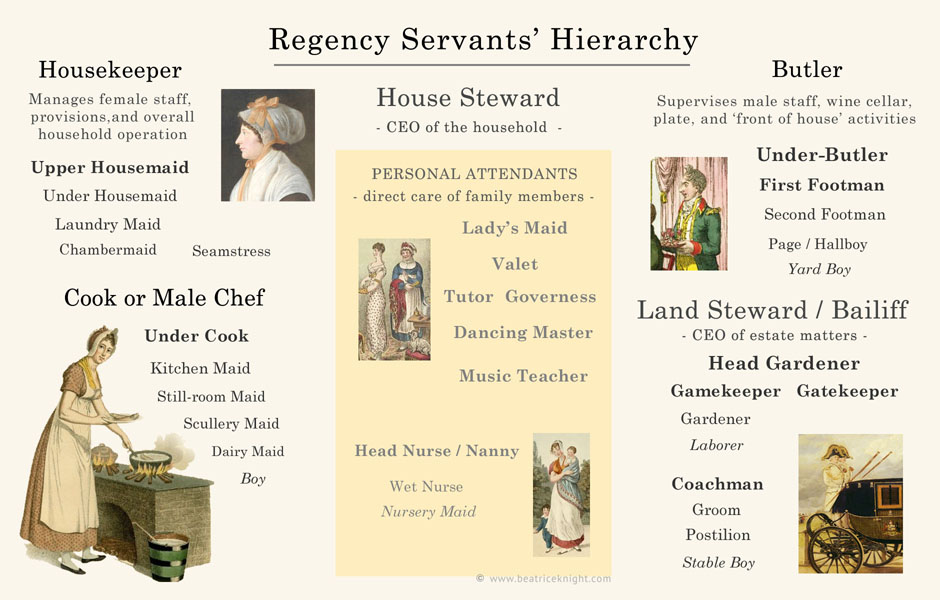
Even the poorest gentry did not expect to do their own dirty work in the Regency era.
If your annual income was £100-200 (approx. $9,000 – 18,000 spending power in today’s money), you could afford “help” in the person of a maid of all work.This luckless dogsbody would work 18 hours a day, seven days a week, for the price of her keep and wages of £8-12 ($720-1080) a year; perhaps a kind employer would grant her one or two days off each month. Even the impoverished Dashwood ladies in Jane Austen’s Sense and Sensibility kept a maid of all work and a “man” after their downward drift to “snug” little Barton cottage.
Off-the-Grid
To understand her work conditions, remember that every home was off-the-grid in the early 19th century. Modest homes did not switch from candles to gas-lighting until after the Regency era. Heat was wood-fired, kitchens were primitive, and there was no plumbing. Water had to be hauled, either pumped from a well or carried up from a stream. On a typical day the maid spent hours discarding slops, hauling fresh water for dishes, scrubbing, and lugging pails of clean water for her own and her employers’ personal requirements.
Laundry was such an ordeal that most households did theirs once a week, setting aside two days for the process of soaking, strain-treating, pounding, wringing and drying. Water didn’t heat itself. It had to be heated in a boiler and poured into scouring tubs. Households mixed pearl-ash and soap and softened their water with soda to improve lather and reduce the amount of soap needed. White garments and linens were soaked overnight before being boiled with lye and pounded by hand. Laundry was wrung out and dried on lines, and then ironed—another onerous chore.
Somehow, on top of this, the maid of all work did her usual sweeping and dusting, cleaned fireplaces, cooked and served meals, baked bread, pies and cakes, warmed beds in winter, and helped the ladies dress.
Prospects
If she ever took a moment to ponder her prospects, the maid of all work probably counted her blessings to have a place in a respectable home. Working class women had few alternatives: marriage and children would increase her workload and decrease her life expectancy. But without a husband or an employer, she may find herself living on the streets.
Lack of options and the economics of supply and demand kept the maid of all work at the bottom of the heap. In the Regency era there were plenty more where she came from.

